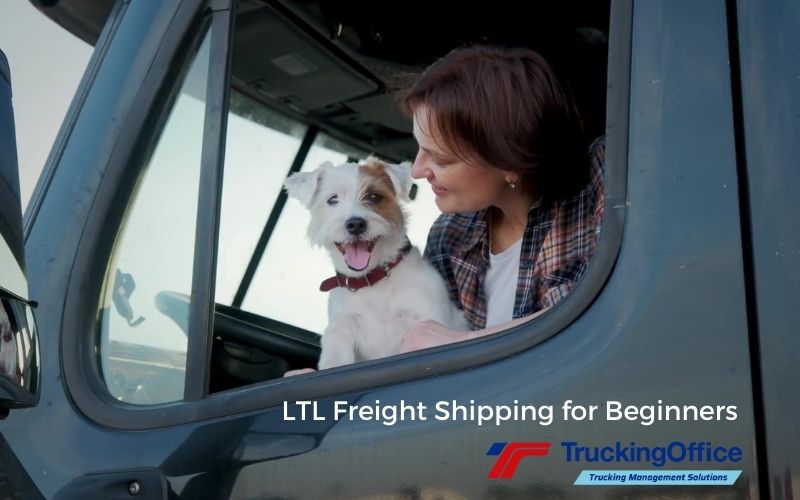Less than a full load of freight shipping (LTL) potentially can create a profitable business model for a trucker or small fleet manager. It’s not a niche for everyone. But when you’re working with a box truck or hauling a small trailer, this may be the way to get started.
LTL Freight
There are thousands of small businesses that need to ship their product. Individuals may have big items like cars to move across the country. Buying a car online and having it shipped across the country used to be crazy. Now it happens every day. LTL freight is a specific niche but many key points of shipping apply.
Get the Licenses and Permits
This is still trucking, even if there’s no 18 wheeler involved. The Commercial Drivers License (CDL) and Operating Authority from FMCSA (the government) are where you start, but there may be more for your specialty. If you’re crossing state lines, IFTA stickers and IRP apportioned plates may be necessary. Check with your state’s DOT for more details of what you need.
The Rig You Have or the Rig You Want?
If you’re just getting started, we strongly advise you to buy wisely – and used. The cost of new equipment when you’re trying out the LTL freight field is extremely high. Going into massive debt for an experiment is… well… not smart. Leasing equipment for a year – not lease to buy – gives you a year to decide. Flexibility when you’re starting in the LTL freight is critical. You don’t want to be locked into a loan payment long after you discover that LTL freight may not be for you, or the rig isn’t capable of handling the LTL freight loads you want to move.
The Software You Need
Too often we hear about new truckers entering the field without a clear understanding that they’re starting a business. Even if they sign on with a shipping company, trucking is an (excuse the pun) independently driven business. If a trucker doesn’t have the self-control to avoid the traps and potholes, they can’t succeed in the logistics industry.
One of the biggest surprises that a trucker needs more software than Google and QuickBooks can provide. We’re not saying that there aren’t truckers out there running their entire business on the Google Business Suite or Workspace. We’re sure they put hours into developing their systems to run their business.
We know it’s hours because we offer a trucking management software platform and we know what all goes into developing it. All that time programming the complicated invoicing and dispatch tracking, not to mention IFTA and IRP – when you could be making money on the road.
What If You Want To Haul LTL Freight? Get Organized
That’s why you’re here, right? You don’t want to have to deal with all the other tasks of running a business. You want to know how to haul LTL freight.
Key thoughts
- LTL is not driving a full load to one place and picking up another for the return trip, regardless of the size of your trailer or box truck. LTL is carrying 2 or more loads in one trip.
- Organizing your load in your rig is critical. That means making delivery decisions based on load, size and location is as important as getting the dollars per mile. How much cubic feet in your trailer can you fill and still carry safely – without burning out your engine? How much weight will your trailer carry?
Oversized loads on a smaller rig can destroy your equipment. Leaving too much space leaves money on the table when you could haul more.
Planning, Planning, Planning
The most important part of LTL freight is being organized. Searching for loads that are compatible can be exhausting until you get the hang of the load boards and understand the capabilities and limits of your rig.
This is where load organizing software helps. How do you bill a customer for taking their load a couple hundred miles out of the way to make another delivery? You don’t.
But that very likely will happen with an LTL shipment.
That’s why you need trucking software that manages LTL freight shipping .
TruckingOffice PRO has the program you need to manage your LTL freight business. By creating a trip with TruckingOffice PRO, you can plan your loads to maximize your capacity and your time. Then the invoices will be accurate, your mileage per state will be perfect (especially if you use TruckingOffice’s ELD), and you’ll avoid the stress that puts most LTL shippers off the road.
TruckingOffice PRO and LTL Loads
Getting started in LTL? Then get started with TruckingOffice PRO now for free. You can use our trucking management software for a free trial to discover the freedom of the road and the freedom from stress in running a business, especially a complicated one like LTL shipping. Sign up today for the free trial and get on the road to make money with your trucking business.







Recent Comments